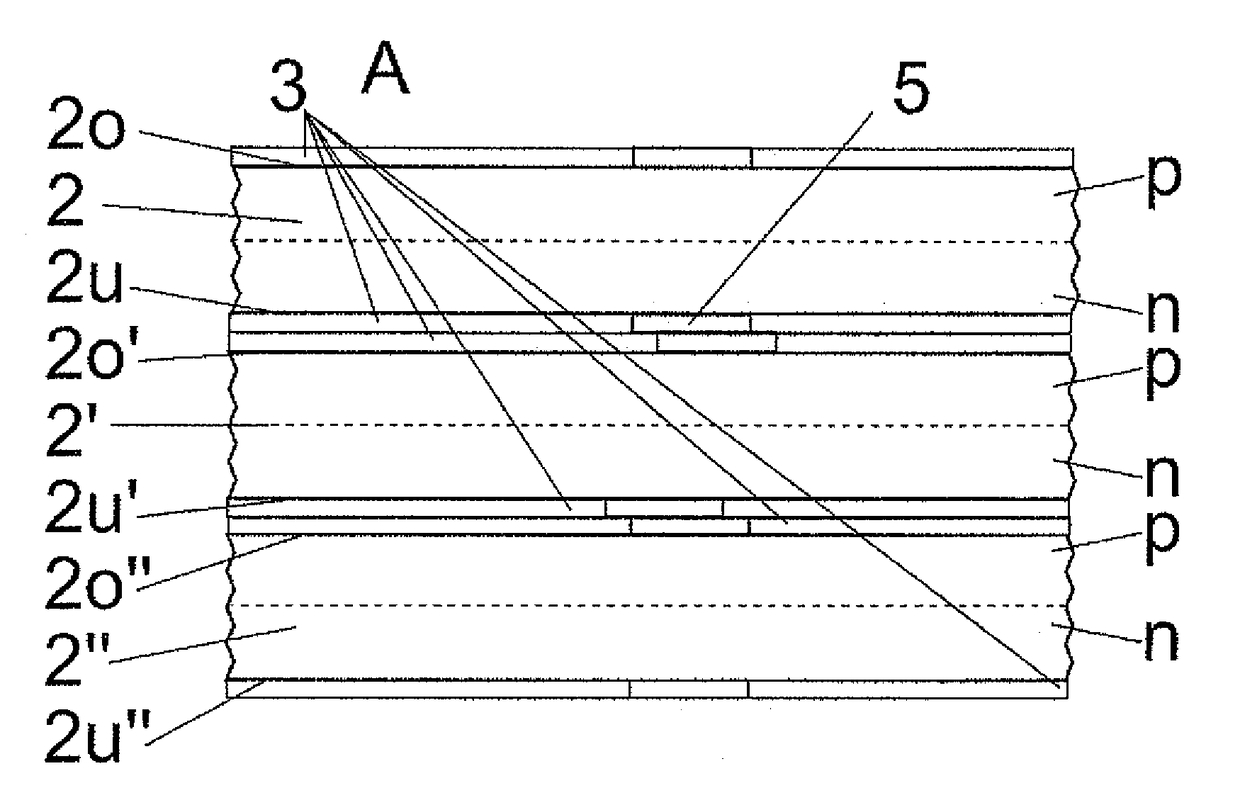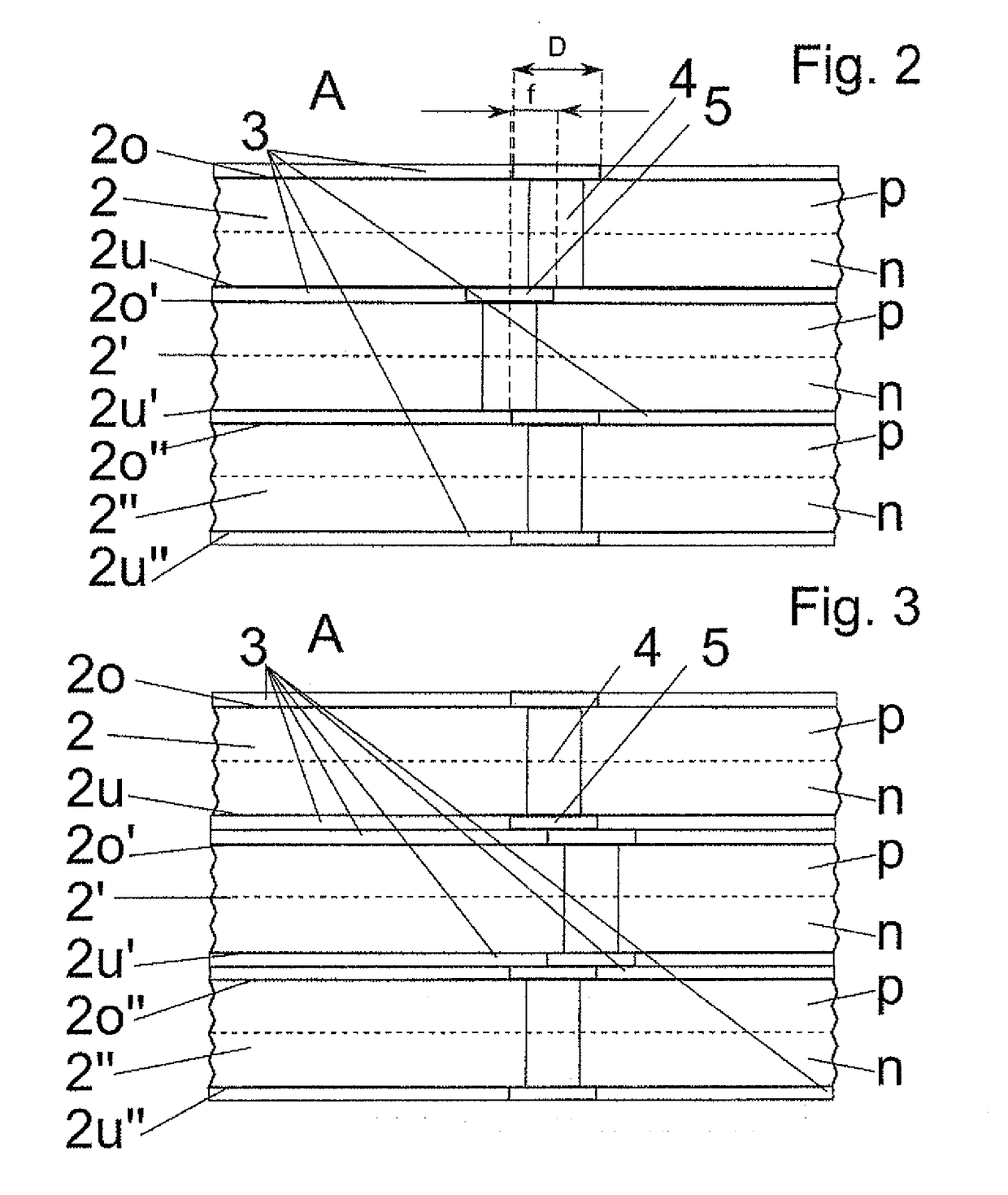Method for producing a conductive multiple substrate stack
- Summary
- Abstract
- Description
- Claims
- Application Information
AI Technical Summary
Benefits of technology
Problems solved by technology
Method used
Image
Examples
Embodiment Construction
[0098]FIG. 1 shows a schematic cross-sectional view of a substrate stack 1 according to the invention, comprised of three substrates 2, 2′, 2″, The stacking of more or fewer than three substrates 2, 2′, 2″ is also conceivable. The wavelength sensitivity of the substrates is symbolized by wave trains with different wavelength, which represent the electromagnetic waves, in the sense of the partial image, actually the photons. Corresponding contacts for tapping the total voltage generated by the solar cell stack on the outer side are not shown.
[0099]FIG. 2 shows an enlargement of the section A of the schematic cross-sectional view according to FIG. 1 in a first embodiment according to the invention, in which one can see dielectric layers, particularly oxide layers, 3, by means of which the substrates 2, 2′, 2″ have been connected to one another.
[0100]The dielectric layers 3 alternate in this case between the individual substrates 2, 2′, 2″. This alternation is preferably achieved in su...
PUM
 Login to View More
Login to View More Abstract
Description
Claims
Application Information
 Login to View More
Login to View More - R&D
- Intellectual Property
- Life Sciences
- Materials
- Tech Scout
- Unparalleled Data Quality
- Higher Quality Content
- 60% Fewer Hallucinations
Browse by: Latest US Patents, China's latest patents, Technical Efficacy Thesaurus, Application Domain, Technology Topic, Popular Technical Reports.
© 2025 PatSnap. All rights reserved.Legal|Privacy policy|Modern Slavery Act Transparency Statement|Sitemap|About US| Contact US: help@patsnap.com



